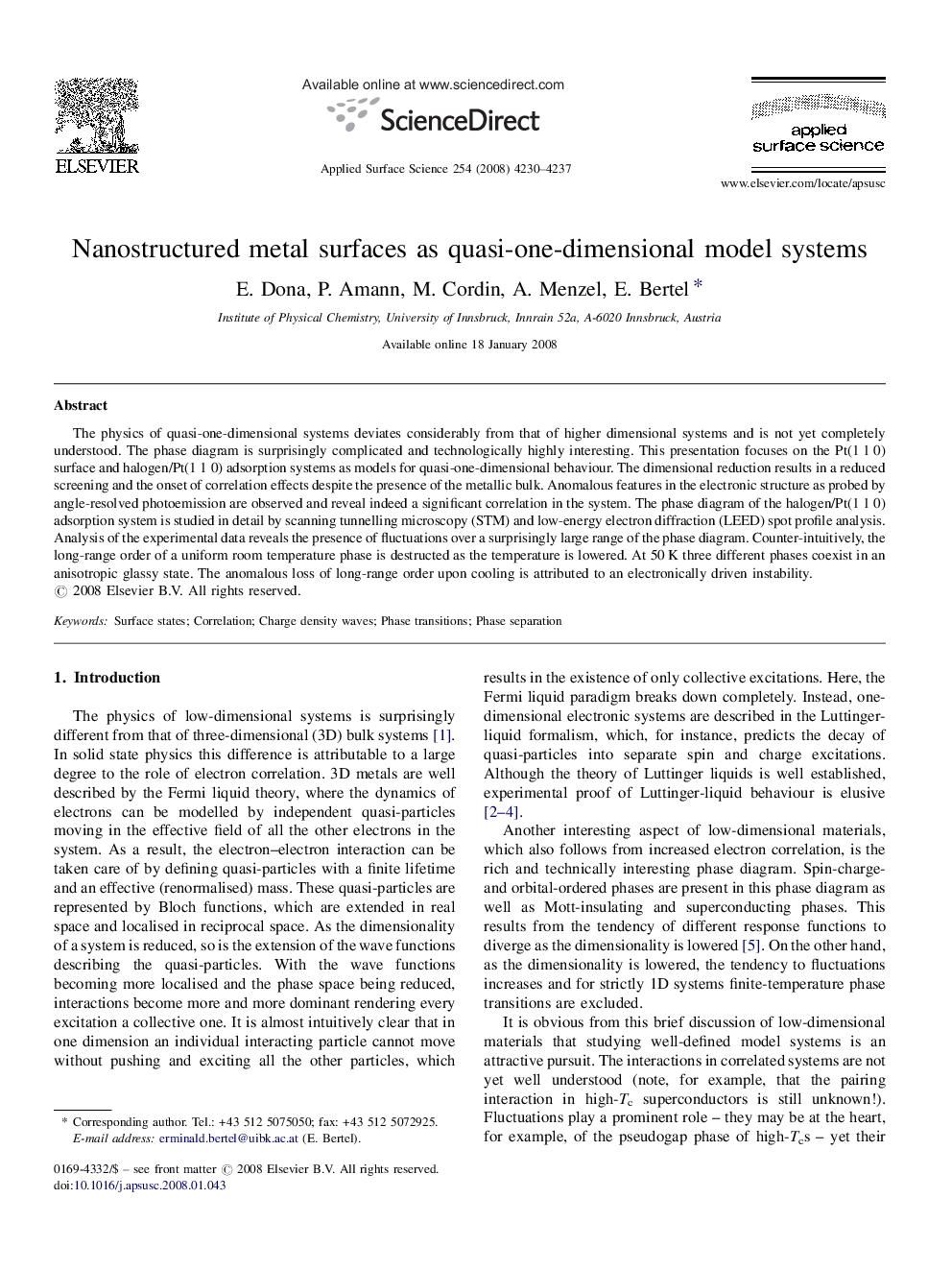| Article ID | Journal | Published Year | Pages | File Type |
|---|---|---|---|---|
| 5364234 | Applied Surface Science | 2008 | 8 Pages |
Abstract
The physics of quasi-one-dimensional systems deviates considerably from that of higher dimensional systems and is not yet completely understood. The phase diagram is surprisingly complicated and technologically highly interesting. This presentation focuses on the Pt(1Â 1Â 0) surface and halogen/Pt(1Â 1Â 0) adsorption systems as models for quasi-one-dimensional behaviour. The dimensional reduction results in a reduced screening and the onset of correlation effects despite the presence of the metallic bulk. Anomalous features in the electronic structure as probed by angle-resolved photoemission are observed and reveal indeed a significant correlation in the system. The phase diagram of the halogen/Pt(1Â 1Â 0) adsorption system is studied in detail by scanning tunnelling microscopy (STM) and low-energy electron diffraction (LEED) spot profile analysis. Analysis of the experimental data reveals the presence of fluctuations over a surprisingly large range of the phase diagram. Counter-intuitively, the long-range order of a uniform room temperature phase is destructed as the temperature is lowered. At 50Â K three different phases coexist in an anisotropic glassy state. The anomalous loss of long-range order upon cooling is attributed to an electronically driven instability.
Related Topics
Physical Sciences and Engineering
Chemistry
Physical and Theoretical Chemistry
Authors
E. Dona, P. Amann, M. Cordin, A. Menzel, E. Bertel,
